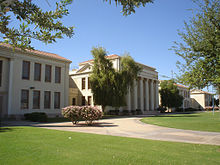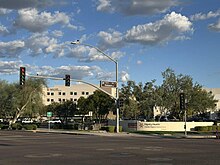

The purpose of conducting a medical records review is to ensure that healthcare providers are delivering the highest quality care to their patients. By carefully examining the documentation within a patient's medical records, healthcare professionals can track the patient's health history, monitor their progress, and identify any potential issues or areas for improvement.
Medical records reviews also play a crucial role in ensuring that accurate and comprehensive information is being recorded and shared among healthcare providers. This helps to improve communication between different members of the healthcare team, leading to better coordination of care and ultimately better outcomes for patients.
Furthermore, medical records reviews can help identify patterns or trends in patient care, which can be used to inform quality improvement initiatives and enhance overall healthcare delivery. By analyzing data from medical records, healthcare organizations can identify opportunities for enhancing efficiency, reducing errors, and improving patient satisfaction.
In summary, the purpose of conducting a medical records review is multifaceted it enables healthcare providers to monitor patient progress, improve communication and collaboration among team members, and drive continuous quality improvement efforts. Ultimately, these reviews are essential for ensuring that patients receive the best possible care and outcomes.
Accurate and detailed documentation is crucial in the medical records review process. It plays a vital role in ensuring that patient information is correctly recorded, which is essential for providing high-quality healthcare.
When medical professionals review patient records, they rely on accurate documentation to make informed decisions about treatment plans and care. Without clear and detailed information, important details about a patient's medical history, current health status, and previous treatments could be missed or misunderstood.
Inaccurate or incomplete documentation can lead to misdiagnoses, inappropriate treatments, and potential harm to patients. It can also result in billing errors, legal issues, and challenges with insurance claims. By maintaining accurate and detailed records, healthcare providers can improve patient outcomes, enhance communication between providers, and ensure continuity of care.
Furthermore, accurate documentation is essential for research purposes, quality improvement initiatives, and compliance with regulatory requirements. Medical records serve as a valuable source of data for analyzing trends in healthcare delivery, identifying areas for improvement, and monitoring the effectiveness of interventions.
Overall, accurate and detailed documentation is essential for the medical records review process. It enables healthcare providers to deliver safe and effective care, promotes collaboration among providers, supports research efforts, and ensures compliance with regulations. By prioritizing the importance of accurate documentation in healthcare settings, we can improve patient safety and enhance the quality of care provided to individuals around the world.

Seeking legal representation for medical malpractice claims is of utmost importance in ensuring that your rights are protected and that you receive the compensation you deserve.. Dealing with the aftermath of a medical error can be overwhelming, both emotionally and financially.
Posted by on 2024-11-18

Medical malpractice law is a complex and ever-evolving field that aims to protect patients from negligent or harmful medical care.. In recent years, there have been several noteworthy developments and trends in this area of law in Chandler. One significant trend is the increasing use of alternative dispute resolution mechanisms, such as mediation and arbitration, to resolve medical malpractice claims.
Posted by on 2024-11-18
The medical records review process is a crucial step in ensuring the accuracy and completeness of a patient's healthcare information. This process involves several key steps that are essential for providing quality care and treatment.
The first step in the medical records review process is to gather all relevant medical documents, including physician notes, test results, and treatment plans. These records are then carefully examined by trained professionals to identify any discrepancies or missing information.
Once all records have been collected and reviewed, the next step is to organize the information in a logical manner. This may involve creating a summary of the patient's medical history, highlighting important details such as chronic conditions or previous surgeries.
After organizing the information, the next step is to analyze the records for any potential errors or inconsistencies. This may involve comparing current test results with previous ones, or verifying that medications prescribed are appropriate for the patient's condition.
Finally, once all records have been reviewed and analyzed, recommendations may be made for additional testing or treatments based on the findings. These recommendations are communicated to the patient's healthcare provider to ensure that they are aware of any necessary changes to their care plan.
Overall, the medical records review process plays a critical role in ensuring that patients receive quality care and treatment. By following these key steps, healthcare providers can confidently make informed decisions about their patients' health and well-being.

The role of healthcare professionals in reviewing medical records is crucial in ensuring the accuracy and completeness of patient information. Medical records contain vital details about a patient's health history, treatments received, and ongoing medical issues.
Healthcare professionals, such as doctors, nurses, and medical billers, play a significant role in reviewing these records to ensure that they are up-to-date and accurate. By carefully examining medical records, healthcare professionals can identify any discrepancies or errors that may impact patient care.
Medical records review process involves analyzing various documents, including physician notes, test results, medication lists, and treatment plans. Healthcare professionals must pay close attention to detail and thoroughly review each document to ensure that all information is recorded correctly.
Through the review process, healthcare professionals can also identify patterns or trends in a patient's health history that may require further investigation or intervention. This information is essential for providing quality care and developing effective treatment plans for patients.
Overall, the role of healthcare professionals in reviewing medical records is critical for maintaining accurate and comprehensive patient information. By ensuring the integrity of medical records, healthcare professionals can improve patient outcomes and provide high-quality care.
When it comes to reviewing medical records, there are a number of common challenges that can arise during the process. One of the most prevalent issues is the sheer volume of information that needs to be reviewed. Medical records can be extensive and detailed, making it difficult for reviewers to sift through all the data efficiently.
Another challenge is ensuring the accuracy and completeness of the information contained in the records. Errors or missing information can lead to misunderstandings or incorrect diagnoses, so it is crucial for reviewers to carefully comb through each record for any discrepancies.
Additionally, navigating different formats and systems used by various healthcare providers can pose a challenge during medical records review. Each facility may have its own way of documenting patient information, which can make it challenging for reviewers to standardize their approach.
Lastly, maintaining patient confidentiality and adhering to privacy regulations is another key challenge in medical records review. Reviewers must ensure that sensitive patient information is handled securely and only accessed by authorized personnel.
Despite these challenges, proper training, attention to detail, and effective communication among all parties involved can help streamline the medical records review process and ensure accurate and thorough assessments are made.
When it comes to the medical records review process, ensuring thorough and effective review is essential for making accurate assessments and decisions. There are several strategies that can help in achieving this goal.
Firstly, it is important to establish clear guidelines and protocols for the review process. This includes defining what information needs to be reviewed, who is responsible for conducting the review, and how the findings will be documented and communicated. Having a structured approach helps ensure consistency and completeness in the review process.
Secondly, adequate training and education for those involved in the review process is crucial. This includes ensuring that reviewers understand the importance of their role, are familiar with relevant medical terminology and documentation practices, and are aware of any specific requirements or regulations that apply to the review.
Regular communication and collaboration among members of the review team can also enhance the effectiveness of the process. By sharing insights, discussing challenging cases, and seeking input from colleagues with different perspectives, reviewers can gain a more comprehensive understanding of the medical records being reviewed.
Utilizing technology tools such as electronic health record systems can also streamline the review process by providing easy access to relevant information, facilitating data analysis, and enabling efficient communication between team members.
Lastly, conducting regular audits or quality assurance checks can help identify any gaps or areas for improvement in the review process. By reviewing sample cases or monitoring key performance indicators, organizations can ensure that their medical records review processes are consistently meeting standards of accuracy and thoroughness.
In conclusion, by implementing these strategies for ensuring thorough and effective medical records reviews, healthcare organizations can improve patient care outcomes, minimize risks of errors or oversights, and enhance overall quality of care provided.
Chandler, Arizona | |
|---|---|
City | |
 Aerial view of Chandler | |
 Location in Maricopa County, Arizona | |
| Coordinates: 33°18′N 111°50′W / 33.300°N 111.833°W | |
| Country | United States |
| State | |
| County | Maricopa |
| Founded | May 17, 1912 |
| Government | |
| • Type | Council-Manager |
| • Mayor | Kevin Hartke[1] |
| Area | |
| • City | 65.55 sq mi (169.77 km2) |
| • Land | 65.48 sq mi (169.58 km2) |
| • Water | 0.07 sq mi (0.18 km2) |
| Elevation | 1,211 ft (370 m) |
| Population (2020)[2] | |
| • City | 275,987 |
| • Estimate (2022)[2] | 280,711 |
| • Rank | US: 78th |
| • Density | 4,226.4/sq mi (1,627.45/km2) |
| • Metro | 4,948,203 |
| • Demonym | Chandlerite |
| Time zone | UTC−7 (MST (no DST)) |
| ZIP Codes | 85224, 85225, 85226, 85286, 85248, 85249 |
| Area code | 480 |
| FIPS code | 04-12000 |
| GNIS feature ID | 2409433[3] |
| Website | www |
Chandler is a city in Maricopa County, Arizona, United States, and a suburb in the Phoenix-Mesa-Chandler Metropolitan Statistical Area. It is the fourth-most populous city in Arizona, after Mesa, Tempe, and Phoenix. Chandler is considered to be a part of the East Valley.
As of the 2020 census, the population of Chandler was 275,987,[2] up from 236,123 at the 2010 census.[4] Chandler is a commercial and tech hub for corporations like Intel, Northrop Grumman, Wells Fargo, PayPal and Boeing.
In 1891, Dr. Alexander John Chandler, a Canadian and the first veterinary surgeon in the Arizona Territory, settled on a ranch south of Mesa and studied irrigation engineering. By 1900, he had acquired 18,000 acres (73 km2) of land and began drawing up plans for a town-site on what was then known as the Chandler Ranch. The town-site office opened on May 16, 1912.
The original town-site was bounded by Galveston Street to the north, Frye Road to the south, Hartford Street to the west, and Hamilton Street to the east.[5] By 1913, a town center was established, featuring the Hotel San Marcos, which also had the first grass golf course in the state. Chandler High School was established in 1914. Chandler was officially incorporated on February 16, 1920, after 186 residents petitioned the Maricopa County Board of Supervisors to approve incorporation.[citation needed]
Most of Chandler's economy was sustained during the Great Depression (though the Depression was to blame for the cancellation of a second San Marcos hotel), but the cotton crash a few years later had a much deeper impact on the city's residents. A. J. Chandler lost his San Marcos hotel to creditors as a result.[6] Later, the founding of Williams Air Force Base in 1941 led to a small surge in population, but Chandler still only held 3,800 people by 1950.[citation needed]
By 1980, the population had grown to 30,000, and it has since paced the Phoenix metropolitan area's high rate of growth, with suburban residential areas and commercial use areas swallowing former agricultural plots. The population has nearly doubled in the last twenty years. Some of this growth was fueled by the establishment of manufacturing plants for communications and computing firms such as Microchip, Motorola and Intel.
According to the 2020 census, Chandler has a total area of 65.55 square miles (169.8 km2), of which 0.07 square miles (0.18 km2), or 0.11%, are listed as water.[2] The center of the city, along Arizona State Route 87, is 22 miles (35 km) southeast of Downtown Phoenix.
Chandler is in proximity to/borders the San-Tan mountain range. The San-Tan mountains are in the jurisdiction of the Gila River Indian Community.
Chandler is divided into three parts: North Chandler, West Chandler and South Chandler, each being divided by the Loop 202 (Santan Freeway) and Loop 101 (Price Freeway).
| Climate data for Chandler, AZ | |||||||||||||
|---|---|---|---|---|---|---|---|---|---|---|---|---|---|
| Month | Jan | Feb | Mar | Apr | May | Jun | Jul | Aug | Sep | Oct | Nov | Dec | Year |
| Record high °F (°C) | 89 (32) |
95 (35) |
99 (37) |
106 (41) |
118 (48) |
116 (47) |
119 (48) |
115 (46) |
113 (45) |
107 (42) |
97 (36) |
86 (30) |
119 (48) |
| Mean daily maximum °F (°C) | 67 (19) |
71 (22) |
77 (25) |
85 (29) |
94 (34) |
104 (40) |
106 (41) |
104 (40) |
99 (37) |
89 (32) |
75 (24) |
67 (19) |
87 (30) |
| Daily mean °F (°C) | 54 (12) |
58 (14) |
63 (17) |
70 (21) |
78 (26) |
87 (31) |
92 (33) |
90 (32) |
85 (29) |
74 (23) |
61 (16) |
54 (12) |
72 (22) |
| Mean daily minimum °F (°C) | 41 (5) |
45 (7) |
49 (9) |
54 (12) |
61 (16) |
70 (21) |
77 (25) |
76 (24) |
70 (21) |
59 (15) |
47 (8) |
40 (4) |
57 (14) |
| Record low °F (°C) | 15 (−9) |
19 (−7) |
24 (−4) |
30 (−1) |
37 (3) |
43 (6) |
54 (12) |
51 (11) |
40 (4) |
30 (−1) |
22 (−6) |
17 (−8) |
15 (−9) |
| Average precipitation inches (mm) | 1.01 (26) |
1.03 (26) |
1.19 (30) |
0.33 (8.4) |
0.17 (4.3) |
0.06 (1.5) |
0.89 (23) |
1.14 (29) |
0.89 (23) |
0.81 (21) |
0.77 (20) |
0.98 (25) |
9.20 (234) |
| Source: The Weather Channel[7] | |||||||||||||
| Census | Pop. | Note | %± |
|---|---|---|---|
| 1930 | 1,378 | — | |
| 1940 | 1,239 | −10.1% | |
| 1950 | 3,799 | 206.6% | |
| 1960 | 9,531 | 150.9% | |
| 1970 | 13,763 | 44.4% | |
| 1980 | 29,673 | 115.6% | |
| 1990 | 89,862 | 202.8% | |
| 2000 | 176,581 | 96.5% | |
| 2010 | 236,123 | 33.7% | |
| 2020 | 275,987 | 16.9% | |
| 2022 (est.) | 280,711 | [8] | 1.7% |
| U.S. Decennial Census[9] | |||
| Race / Ethnicity (NH = Non-Hispanic) | Pop 2000[10] | Pop 2010[11] | Pop 2020[12] | % 2000 | % 2010 | % 2020 |
|---|---|---|---|---|---|---|
| White alone (NH) | 121,168 | 145,724 | 147,119 | 68.62% | 61.72% | 53.31% |
| Black or African American alone (NH) | 5,821 | 10,580 | 15,564 | 3.30% | 4.48% | 5.64% |
| Native American or Alaska Native alone (NH) | 1,628 | 2,715 | 3,850 | 0.92% | 1.15% | 1.39% |
| Asian alone (NH) | 7,345 | 19,119 | 32,710 | 4.16% | 8.10% | 11.85% |
| Pacific Islander alone (NH) | 222 | 365 | 571 | 0.13% | 0.15% | 0.21% |
| Some Other Race alone (NH) | 301 | 369 | 1,237 | 0.17% | 0.16% | 0.45% |
| Mixed Race or Multi-Racial (NH) | 3,037 | 5,443 | 12,679 | 1.72% | 2.31% | 4.59% |
| Hispanic or Latino (any race) | 37,059 | 51,808 | 62,257 | 20.99% | 21.94% | 22.56% |
| Total | 176,581 | 236,123 | 275,987 | 100.00% | 100.00% | 100.00% |
As of the 2022[update] American Community Survey estimates, there were 280,684 people and 106,712 households.[13][14] The population density was 4,276.2 inhabitants per square mile (1,651.1/km2). There were 113,092 housing units at an average density of 1,722.9 per square mile (665.2/km2).[15][16][14] The racial makeup of the city was 56.0% White, 13.4% Asian, 7.6% Black or African American, 4.4% some other race, 1.0% Native American or Alaskan Native, and 0.1% Native Hawaiian or Other Pacific Islander, with 17.5% from two or more races.[14] Hispanics or Latinos of any race were 21.2% of the population.[14]
Of the 106,712 households, 34.4% had children under the age of 18 living with them, 24.2% had seniors 65 years or older living with them, 50.7% were married couples living together, 7.4% were couples cohabitating, 18.3% had a male householder with no partner present, and 23.6% had a female householder with no partner present.[13] The median household size was 2.61 and the median family size was 3.12.[13]
The age distribution was 23.8% under 18, 8.9% from 18 to 24, 27.9% from 25 to 44, 26.4% from 45 to 64, and 13.0% who were 65 or older. The median age was 37.0 years.[17] For every 100 females, there were 105.8 males.[14]
The median income for a household was $98,664, with family households having a median income of $116,362 and non-family households $66,304. The per capita income was $50,247.[18][19] Out of the 279,322 people with a determined poverty status, 7.6% were below the poverty line. Further, 9.3% of minors and 7.6% of seniors were below the poverty line.[20]
In the survey, residents self-identified with various ethnic ancestries. People of German descent made up 13.0% of the population of the city, followed by Irish at 10.1%, English at 8.5%, American at 5.7%, Italian at 4.5%, Polish at 1.9%, Scottish at 1.7%, French at 1.6%, Arab at 1.5%, Sub-Saharan African at 1.5%, Norwegian at 1.2%, Dutch at 1.1%, Swedish at 1.0%, French Canadian at 0.6%, Russian at 0.6%, Scotch-Irish at 0.5%, and Greek at 0.5%.[13]
Computer chip manufacturer Intel has two locations in Chandler. Other high-technology manufacturing firms have partnerships with Chandler,[21] their operations employing approximately 25% of non-government workers in 2007.[22]
Since 2003, more than 2,900 jobs and investments totalling $3 billion have been created along the Price and Santan freeways,[23] in the Price Road Corridor.[24] The 1,300,000-square-foot (120,000 m2) Chandler Fashion Center, opened in 2001.
Companies headquartered in Chandler include Keap, Microchip, and Rogers. Bashas' headquarters is in a county island surrounded by Chandler.
According to the City of Chandler Economic Development Division,[25] leading employers in the city are:
| # | Employer | # of Employees |
|---|---|---|
| 1 | Intel | 12,000 |
| 2 | Wells Fargo | 5,500 |
| 3 | Chandler Unified School District | 4,900 |
| 4 | Bank of America | 3,600 |
| 5 | Chandler Regional Medical Center / Dignity Health | 2,500 |
| 6 | Northrop Grumman | 2,150 |
| 7 | Chandler–Gilbert Community College | 1,900 |
| 8 | City of Chandler | 1,800 |
| 9 | Microchip Technology (HQ) | 1,700 |
| 10 | NXP Semiconductors | 1,700 |
| 11 | PayPal | 1,500 |
| 12 | Insight Enterprises | 1,400 |
| 13 | Microchip Technology | 1,500 |
| 14 | Verizon | 1,400 |
| 15 | Bashas' (HQ and Distribution Center) | 1,100 |

Chandler holds an annual Ostrich Festival at Tumbleweed Park[26] to commemorate when ostrich farms in the area produced plumes for women's hats during the 1910s.[citation needed]
Chandler also holds an annual ceremony to light a tree made from tumbleweeds; a ceremony founded in 1957 when Chandler sought an alternative way to decorate the city during the Christmas holidays.[27]
Venues, galleries and museums include:
Several sites in Chandler are listed on the National Register of Historic Places, including the McCullough–Price House and the San Marcos Hotel.[30]
The Chandler Public Library serves Chandler and the greater East Valley. The main library is in Downtown Chandler, with two branches elsewhere in the city: Sunset, Basha (shared with Basha High School), and Hamilton (shared with Hamilton High School).

Tumbleweed Park hosts the annual Ostrich Festival, the Fourth of July Fireworks Festival and the annual Day of Play. It features a recreational center with equipment suited for fitness.[31]
Hamilton Aquatic Center is a shared-use aquatic facility, located within Hamilton High School's campus.[32]
Nozomi Aquatic Center is a shared-use aquatic facility which includes a 25 yard, 8-lane competition pool.[33]
Veterans Oasis Park is located at the city's highest point, at 1,311 feet (400 m).[34] It includes a wildlife preservation and designated horse and walking trails.[35]
Chandler is represented by a mayor, a vice mayor and five city council members. The vice mayor is elected by the city council from among its members. The mayor, vice mayor and council members represent the entire city and are not elected from districts or wards.[36]
Kevin Hartke was elected to his second term as mayor in 2023.[36]

The north central section of the city and the western "leg" of the city are within Arizona's 4th congressional district, served by Representative Greg Stanton, a Democrat. The rest of Chandler is within Arizona's 5th congressional district, served by Representative Andy Biggs, a Republican.
Chandler's western "leg" and a small, narrow portion of the adjacent northern part of the city are within Arizona's 18th Legislative District, served by Representatives Denise Epstein and Jennifer Jermaine, and Senator Sean Bowie, all Democrats. The rest of the city is in Arizona's 17th Legislative District, served by Representatives Jennifer Pawlik and Jeff Weninger, and Senator J. D. Mesnard, one Democrat and two Republicans.

Chandler is served by the Chandler Unified School District, Kyrene Elementary School District, Tempe Union High School District, Mesa Public Schools, and Gilbert Public Schools.[citation needed]
Catholic and charter schools include Basis Schools, Seton Catholic Preparatory, and Legacy Traditional Schools.[37]
Post-secondary educational institutions located in Chandler include: The University of Arizona Chandler,[38] International Baptist College, and the two-year Chandler-Gilbert Community College, which serves 13,000 students.[37]
Chandler Municipal Airport is a two-runway general aviation facility. Stellar Airpark is a privately owned municipal airport open to the public.

Chandler is served by three limited access highways:
Chandler is served by two single-track branch lines of the Union Pacific Railroad.
Hospitals in Chandler include Chandler Regional Medical Center, and Banner Ocotillo Medical Center.[40][41]
Chandler has two sister cities:[42]